Great Lakes Cicada Page | home
Introducing the Cicada | Life Cycle | 1999 Brood V Account | My Journeys | Magicicada Galleries | Magicicada Gallery 2 | Magicicada Nymphs | Chimneys & Emergence Holes | Magicicada Emergence | Magicicada Emergence 2 | Magicicadas Feeding | Magicicada Mating | Magicicada Ovipositing | Eggs & Egg Damage | Cicada Mortality | Brood Maps | Tibicen Galleries | Tibicen Gallery 2 | Tibicen Nymphs | Tibicen Emergence | Tibicen Emergence 2 | Tibicen Feeding & Ovipositing | Okanagana Galleries | Field Guide | How to Find | Deterrence | Armed Robbery??? | My Story | About Me | Cicada Links | The Future
Magicicada Emergence
The emergence of the cicada is a sight to behold. Seeing millions of cicadas crawling up the sides of tree trunks can be a bit overwhelming - even for the bugs themselves.
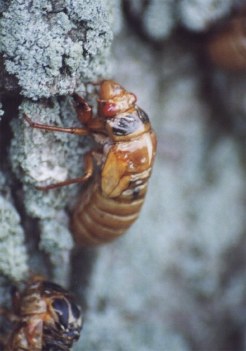
The delicate process begins when the freshly emerged nymph attaches itself to a firm support.
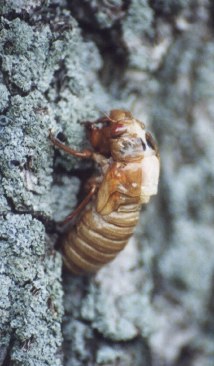
Then, after numerous contractions, the subterranean skin slowly splits down the back.
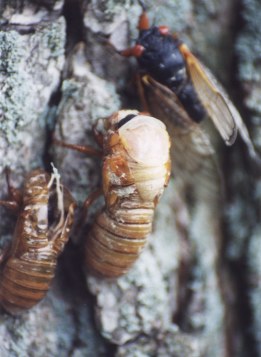
The newly born adult squeezes through the narrow opening in its back. The thorax appears first, then the head. Timing is crucial at this point, and if not done properly, the adult may become trapped in its own husk.
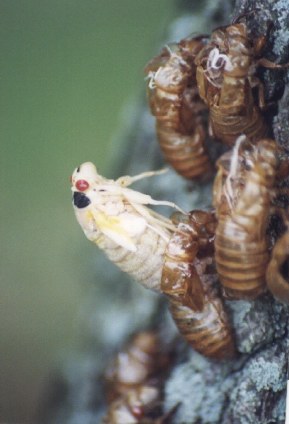
With many more contractions, the adult is eventually able to free itself from its old exuviae. This new born adult is still very vulnerable at this stage. Its body is soft and weak, and it wings are shriveled.
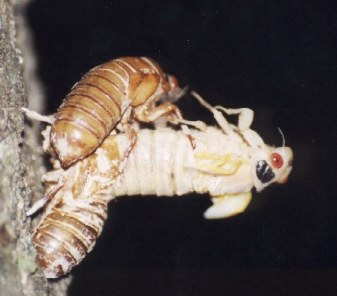
Now dangling by its abdomen, the cicadas often pause and take a rest. Like childbirth, its a hard ordeal.
Note the nymph attempting to climb over the newly emerged adult. During mass emergences, cicadas face a struggle against time and available space. Many overcrowd themselves by climbing over their brothers and sisters (see left) and often knock each other off the side of the tree trunks. The fall is often fatal for the fragile new cicadas.
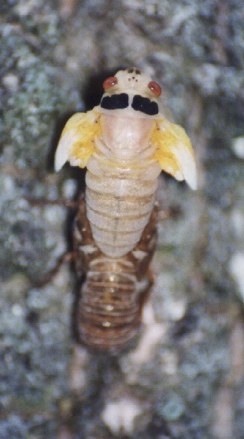
During this helpless stage, the cicada's only defense are the false eye spots located on the back of its thorax. Much like certain species of Swallowtail Butterfly larvae, the false eye spots are designed to possibly deter predators.
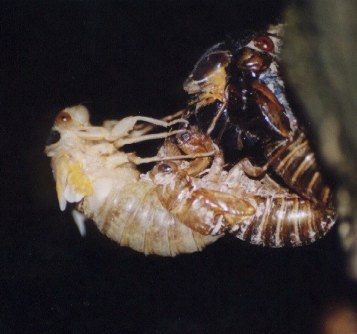
After resting, the cicada slowly sits up and grasps its old husk. Note that this cicada has emerged on top of another cicada that has failed to emerge successfully. This other less fortunate cicada has become trapped in its shell and will eventually die in the hot sun or be eaten by scavenging insects.
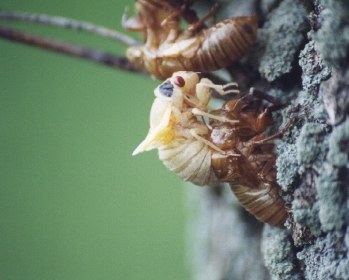
Once a firm grip on its shell or other available support is established, the cicada pulls itself free from its husk.
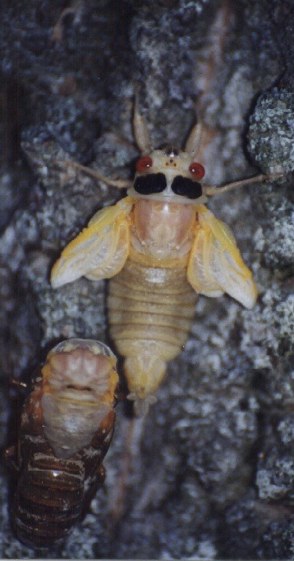
Now freed, the cicada begins to pump blood into the veins of its wings which then begin to unshrivel.
To see what happens next... Refer to the Magicicada Emergence Gallery 2.